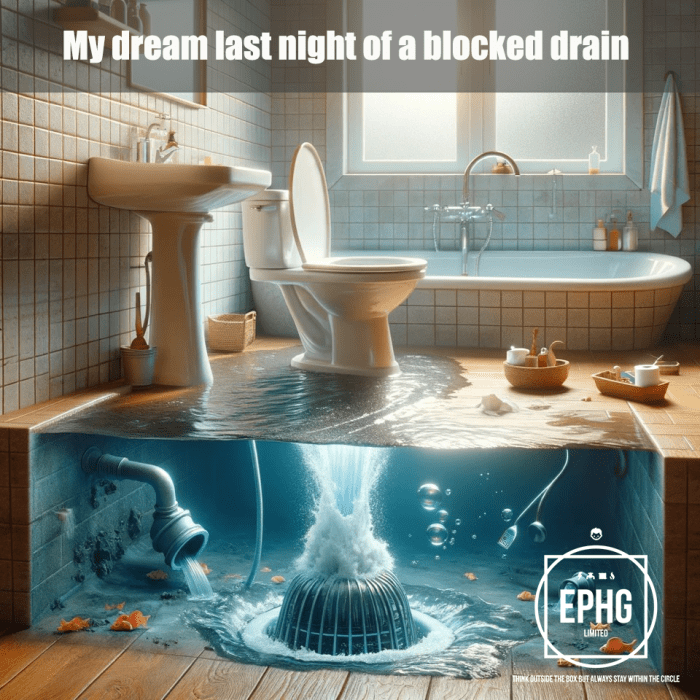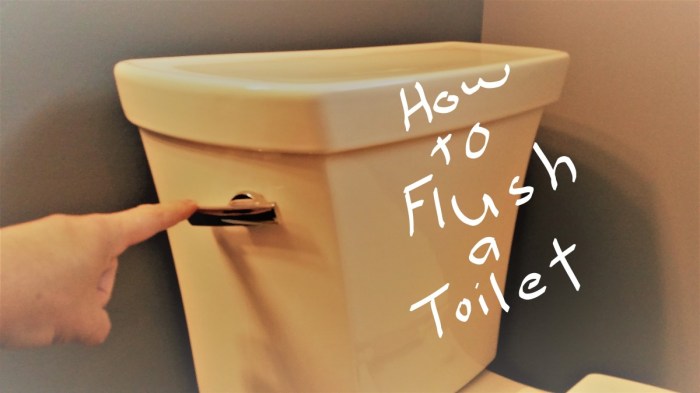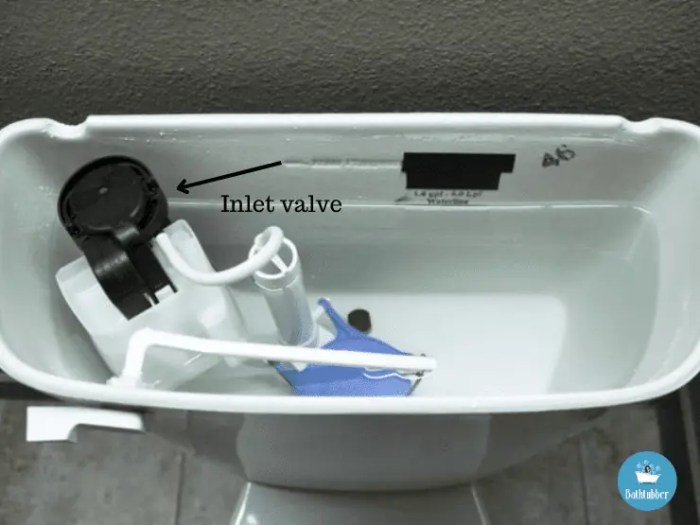Toilet Wont Flush, Bathtub Fills A Guide
Toilet won t flush and bathtub fills – Toilet won’t flush and bathtub fills? This comprehensive guide dives into the potential causes and troubleshooting steps for these common plumbing issues. We’ll explore everything from clogged drains to low water pressure and structural problems, providing detailed explanations and actionable advice.
Understanding the intricate relationship between the toilet and bathtub plumbing systems is key to resolving these problems effectively. This guide provides a step-by-step approach, from identifying the source of the issue to implementing practical solutions. We’ll cover various plumbing connections, drain clogs, and water pressure issues, ensuring you’re equipped to handle any plumbing challenge.
Toilet Issues
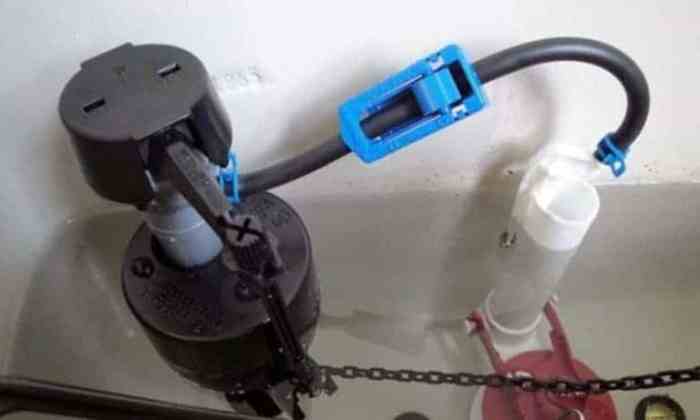
Source: sunrisespecialty.com
A malfunctioning toilet can disrupt daily routines. Understanding the potential causes of flushing problems is key to efficient troubleshooting and timely repairs. Proper diagnosis often involves identifying the specific symptoms and applying appropriate solutions.
Potential Causes of Toilet Flushing Problems
Toilet flushing difficulties stem from various underlying issues. These range from simple clogs to more complex mechanical problems. Identifying the root cause is crucial for effective repairs.
- Clogged Drain: A clogged drain is a common culprit for toilet flushing problems. Foreign objects, such as toys, paper, or even clumps of hard-to-digest food, can obstruct the drain line, preventing the water from flowing as expected. This leads to a buildup of pressure in the tank, making it difficult for the water to exit into the bowl. This can also cause a slow or partial flush. A complete blockage may prevent any flushing whatsoever. This is often the first thing to check.
- Low Water Pressure: Insufficient water pressure can impede the flushing process. A reduced water supply means the water in the tank might not have enough force to push the water through the drain line efficiently. This could lead to a weak or incomplete flush. This issue might manifest with a partially flushed toilet or one that requires multiple attempts. This is often related to issues in the home’s plumbing system or in the water supply to the home.
- Broken Parts: Toilet malfunctions can be caused by mechanical issues within the toilet itself. A faulty flapper valve, a broken chain, or a malfunctioning flush mechanism can disrupt the flushing cycle. A broken flapper, for example, fails to seal properly, leading to a continuous leakage of water from the tank, reducing the water level and ultimately hindering the flush process. A damaged flush mechanism might not operate correctly, preventing the proper activation of the flushing action.
- Water Level Issues: An incorrect water level in the toilet tank can lead to flushing problems. If the water level is too high, it can overflow into the bowl, leading to a weak or incomplete flush. If the water level is too low, the water in the tank may not have enough force to flush the bowl. This is directly linked to the efficiency of the flush process. This is an issue to consider and investigate if the above causes do not solve the problem.
Symptom Comparison of Toilet Flushing Problems
The table below summarizes common symptoms and their potential causes. Careful observation can help pinpoint the source of the issue.
| Symptom | Possible Cause |
|---|---|
| Toilet flushes slowly or partially | Clogged drain, low water pressure, broken flush mechanism, low water level in the tank |
| Toilet won’t flush at all | Completely clogged drain, broken flush mechanism, low water pressure |
| Water continuously leaks from the tank | Faulty flapper valve |
| Water overflows from the bowl | Water level too high in the tank, clog in the drain line |
Effect of Low Water Level on Flushing
A low water level in the toilet tank directly affects the flushing power. The water in the tank needs sufficient height to generate the necessary pressure for a forceful flush. A lower water level results in less water pressure, leading to a weaker flush. This can leave some solid waste or debris in the bowl, hindering the effectiveness of the flush.
Checking the Water Level in a Toilet Tank
The water level in a toilet tank is critical for proper flushing. To check the water level:
- Turn off the water supply to the toilet tank.
- Locate the fill valve and gently remove the overflow tube.
- Observe the water level. The water should reach a specific mark on the fill tube or the overflow tube.
- Adjust the water level if needed. If the water level is too high, you may need to adjust the fill valve mechanism. If it’s too low, the fill valve needs to be adjusted.
Bathtub Overflowing
A common plumbing issue is a bathtub that fills with water instead of draining properly. This often results in a frustrating and potentially costly problem if not addressed promptly. Understanding the potential causes and how to diagnose them is crucial for effective solutions.
Overflowing bathtubs can stem from a variety of problems, ranging from simple clogs to more complex plumbing or structural issues. Careful investigation is key to identifying the root cause and implementing the correct repair.
Possible Causes of Bathtub Overflow
Plumbing systems can develop blockages or malfunctions, affecting drainage and leading to overflows. Structural issues within the home, such as improper grading or drainage around the foundation, can also contribute to this problem. Identifying the source of the overflow is critical for implementing the right solution.
Diagnosing Bathtub Overflow Issues
A systematic approach is essential to diagnose a bathtub overflow. Start by checking for visible obstructions in the drainpipe. If nothing is immediately apparent, proceed to a more in-depth investigation.
Common Clog Locations
Clogs or blockages can occur at various points in the drain system, from the bathtub drain itself to the main sewer line. Understanding these locations is crucial for pinpointing the source of the problem. Clogs are frequently found in the drainpipe near the connection point to the wall, as well as within the pipes extending from the drain to the main sewer line. The P-trap, a curved section of pipe under the drain, is also a common area for clogs.
Comparison of Overflow Causes and Symptoms
The following table Artikels potential causes of bathtub overflow, along with their corresponding symptoms, and potential solutions.
| Cause | Symptoms | Possible Solutions |
|---|---|---|
| Clogged drainpipe (within the bathtub drain or extending from it) | Water does not drain; slow drainage; water level rises in the tub. | Remove any visible obstructions. Use a drain snake or a plunger to clear clogs. |
| Clogged P-trap | Water backs up in the tub; slow drainage; gurgling sound in the drain. | Remove and clean the P-trap. Use a drain snake to clear blockages. |
| Damaged or improperly installed drainpipe | Water pools in the tub; consistent slow drainage; water seeps through the surrounding area. | Repair or replace the damaged drainpipe. |
| Structural issues (e.g., poor grading, drainage problems around the foundation) | Water backs up in the tub, often recurring or worsening after periods of heavy rain or high water usage. | Consult a plumber to assess and address the underlying structural issues. |
How Clogged Drain Pipes Lead to Overflow
A clogged drainpipe prevents water from flowing freely through the plumbing system. This blockage can lead to a buildup of water within the pipes, eventually causing the water to overflow from the bathtub. The blockage creates a backpressure, which results in the tub filling up. This blockage can occur anywhere along the drain route, from the drain itself to the main sewer line.
Plumbing Connections
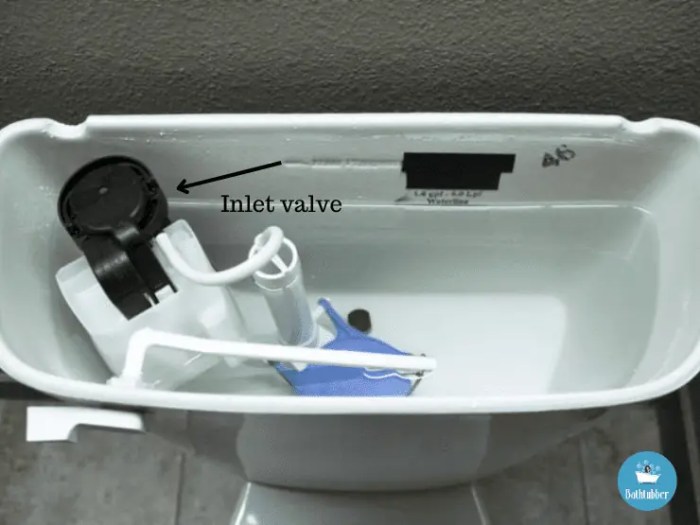
Source: bathtubber.com
Plumbing connections are the crucial links in any water system, connecting pipes and fixtures. Properly installed and maintained connections are essential for efficient water flow and prevent leaks, clogs, and costly repairs. Understanding the different types of connections, common problems, and effective repair methods is vital for maintaining a functional and safe plumbing system.
Types of Plumbing Connections
Various materials are used in plumbing connections, each with its own characteristics and limitations. The most common materials include PVC, copper, and cast iron. PVC (polyvinyl chloride) is a popular choice due to its affordability, ease of installation, and resistance to corrosion. Copper is known for its durability, flexibility, and ability to withstand high water pressure. Cast iron, while less common now, was historically used for its strength and longevity, though it can be susceptible to corrosion over time.
Common Problems in Plumbing Connections
Leaks are a frequent problem in plumbing connections, often arising from corroded or damaged joints. Loose or improperly tightened fittings can also cause leaks. Corrosion is a significant issue, especially with cast iron pipes, which can lead to pitting and eventual breaks. Furthermore, mineral deposits can accumulate in connections, reducing water flow and increasing the risk of clogs. Improper installation, like inadequate support for pipes or misalignment, also contributes to connection problems.
Methods for Fixing Connection Issues
Several methods can be used to address these issues. For minor leaks, tightening fittings or using pipe sealant can be effective. However, more significant leaks or damage might require replacing sections of the pipe or the entire connection. Professional plumbers are often necessary for complex repairs. The method chosen depends on the severity of the problem and the type of connection involved.
Water Supply Valves and Their Impact
Water supply valves regulate the flow of water to fixtures like toilets and bathtubs. Malfunctioning valves can lead to inconsistent water pressure or complete shut-offs, impacting both fixtures. A faulty valve can cause a toilet to run constantly or fail to flush correctly. Similarly, insufficient water pressure at the bathtub’s supply can result in weak water flow or an inability to fill the tub properly.
Relationship Between Toilet and Bathtub Water Supply
While seemingly separate, the toilet and bathtub water supply systems are often connected. A shared water source and pressure regulation systems mean issues with one fixture can indirectly affect the other. For instance, a leak in the main water supply line can impact both fixtures. Similarly, problems with the pressure-regulating valve could cause inconsistent water flow to both the toilet and bathtub.
Drain Clogs
Drain clogs are a common plumbing issue, often causing frustrating backups and potential water damage. Understanding the causes and effective solutions can prevent these problems. Proper maintenance and proactive measures can significantly reduce the frequency of clogs.
Drain clogs result from various materials accumulating in pipes, hindering water flow. Effective solutions involve identifying the cause and employing appropriate tools to clear the blockage.
Types of Clogging Materials
A variety of materials can contribute to drain clogs. Food particles, grease, hair, and even small objects like toys or sanitary items can accumulate and form a blockage. The nature of the clog often dictates the best approach for removal.
Methods for Clearing Drain Clogs
Several methods are available for addressing drain clogs, ranging from simple to more involved techniques. The effectiveness of each method depends on the nature and extent of the clog.
Using a Plunger
A plunger is a basic tool often effective for clearing minor clogs in sinks and toilets. A good seal is essential for creating the suction needed to dislodge the blockage. Apply firm, repeated plunges to create pressure and dislodge the clog.
Employing a Drain Snake
A drain snake, also known as a plumbing auger, is a flexible cable with a helical tip that is inserted into the drain to physically remove the clog. This method is particularly useful for clogs deep within the pipes or involving solid materials.
Tools and Materials Needed
Here’s a list of common tools and materials required for addressing drain clogs:
- Plunger
- Drain snake (or plumbing auger)
- Gloves (for protection)
- Bucket (for collecting water)
- Protective eyewear (optional)
- Channel-lock pliers (for some snake types)
Effectiveness of Different Clog Removal Methods
The following table Artikels the effectiveness of various clog removal methods, considering factors such as clog type and location.
| Method | Effectiveness | Tools Required |
|---|---|---|
| Plunger | Effective for minor clogs in sinks and toilets, especially those near the surface. | Plunger, bucket |
| Drain Snake | Highly effective for removing clogs deeper within the pipe system and clogs made of solid materials. | Drain snake, gloves, channel-lock pliers (if needed) |
The Role of the P-Trap
The P-trap, a curved pipe beneath sinks and other fixtures, plays a crucial role in preventing sewer gases from entering the house. The trapped water in the P-trap creates a barrier, preventing the gases from rising into the house. Maintaining a sufficient water level in the P-trap is important for its effectiveness.
Proper P-trap maintenance is key to preventing sewer gas issues.
Water Pressure and Supply
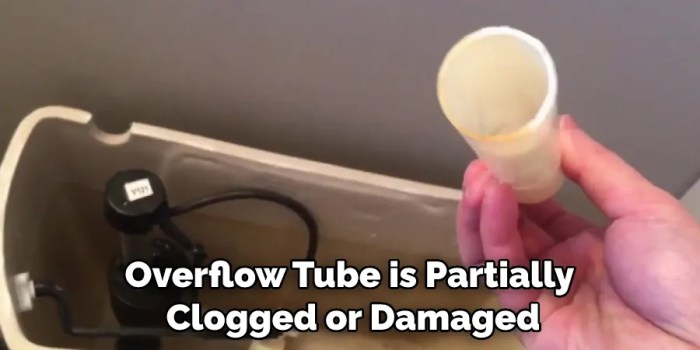
Source: theplumbero.com
Proper water pressure is crucial for the efficient operation of plumbing fixtures. Insufficient pressure can lead to sluggish flushing, weak water streams, and difficulty in draining fixtures. Conversely, excessive pressure can strain pipes and potentially damage fixtures. Understanding the importance of regulated water pressure is vital for maintaining a well-functioning plumbing system.
Adequate water pressure is essential for the smooth operation of plumbing fixtures like toilets, faucets, and showerheads. This pressure facilitates the proper flushing of toilets, ensures a strong water stream from faucets, and enables efficient draining of sinks and tubs. Conversely, inadequate water pressure can result in inefficient flushing, weak water streams, and slow drainage, leading to inconvenience and potential plumbing problems. Regulated water pressure protects fixtures and plumbing components from damage caused by excessive pressure surges.
Checking Water Pressure
To determine the water pressure in your home, specialized tools are necessary. A pressure gauge, attached to the water supply line, accurately measures the water pressure. This measurement provides a precise reading of the current water pressure in the system. Carefully follow the instructions provided with the pressure gauge for proper installation and operation to obtain accurate readings.
Troubleshooting Low Water Pressure, Toilet won t flush and bathtub fills
Several factors can contribute to low water pressure in a home. Determining the precise cause requires careful examination of various points in the system. Potential issues range from restricted water flow due to mineral deposits in pipes to problems with the main water supply valve or pressure regulator.
- Restricted Water Flow: Mineral deposits and debris can accumulate in pipes, restricting water flow and reducing pressure. This is a common cause of low water pressure, especially in older homes. The deposits can accumulate over time, and the rate of accumulation varies depending on the water’s composition.
- Main Water Supply Valve: A partially closed or faulty main water supply valve can restrict water flow, resulting in low pressure throughout the house. This is easily checked by turning the valve fully on and observing the pressure changes.
- Water Pressure Regulator: Malfunctioning or incorrectly adjusted pressure regulators can also cause low water pressure. These devices are designed to maintain a consistent water pressure, but if they malfunction, they may not be able to regulate the pressure effectively.
- Leakages: Unnoticed leaks in pipes or fixtures can lead to a significant drop in water pressure, as water is lost before reaching the intended fixtures. These leaks are often difficult to detect, but a significant drop in pressure may be an indicator.
Locating the Problem
The location of the low-pressure issue can vary throughout the house. This variation suggests different potential causes for the problem. For instance, low pressure only in the kitchen might indicate a blockage in the kitchen’s supply lines, while low pressure in the entire house suggests a more widespread issue, like a problem with the main water supply valve.
| Location | Potential Causes |
|---|---|
| Kitchen | Clogged pipes, mineral buildup in kitchen supply lines, or a faulty faucet aerator. |
| Bathroom | Similar to kitchen issues, plus possible problems with showerheads or bathtub drain lines. |
| Entire House | Problems with the main water supply valve, a malfunctioning pressure regulator, or a significant leak in the system. |
Structural Issues
Plumbing systems, like any other engineered structure, are susceptible to issues arising from their physical construction and installation. These structural flaws can manifest in various ways, impacting the performance of crucial fixtures like toilets and bathtubs. Understanding these potential problems is crucial for effective troubleshooting and repair.
Potential Structural Issues Contributing to Fixture Malfunction
Structural issues in plumbing systems can stem from a variety of factors, ranging from improper installation to settling of the building itself. These issues can impact the efficiency of drain pipes and create problems with water flow and pressure. A compromised structural integrity can lead to the failure of drain pipes, causing clogs and overflows in both toilets and bathtubs.
Impact of Faulty Drain Pipes
Faulty drain pipes can disrupt the smooth flow of wastewater from both toilets and bathtubs. A kinked, collapsed, or improperly sloped drain pipe can restrict water drainage, leading to clogs in both fixtures. This obstruction can lead to backflow, causing overflows and hindering the flushing mechanism in toilets. In extreme cases, significant damage to the plumbing system can result.
Causes of Structural Plumbing Issues
Several factors can contribute to structural problems in plumbing systems. These include:
- Improper Installation: Incorrect pipe installation, such as insufficient slope or inadequate support, can cause drain pipes to collapse or sag over time. This can lead to blockages and hinder proper drainage. For example, a drain pipe installed with insufficient slope might allow sediment to accumulate, obstructing the flow.
- Building Settlement: As a structure settles, it can cause stress and strain on the pipes, potentially leading to cracks or kinks in the drain lines. A shifting foundation can lead to uneven pressure on the pipes, ultimately compromising their structural integrity.
- Poor Pipe Material: Using substandard or unsuitable pipe materials, like those that are too thin or brittle, can make the pipes more prone to damage from stress or pressure fluctuations. Over time, these pipes can develop cracks or perforations, leading to leaks and clogs.
- External Forces: External factors such as tree roots growing near pipes or improper handling during construction can also cause damage to drain lines, impacting the smooth flow of water. Construction damage during renovations or expansions, like improper trenching or backfilling, can damage the drain pipes.
Diagnosing Structural Plumbing Issues
Diagnosing structural plumbing problems requires a methodical approach. Visual inspection of the pipes, particularly in accessible areas, is essential. Leak detection techniques, such as listening for unusual noises or checking for dampness around pipes, can help pinpoint potential problem areas. Pressure testing can also identify weaknesses or blockages within the system. In some cases, specialized tools and techniques, like CCTV camera inspections, might be necessary to assess the condition of the pipes in inaccessible areas.
Professional Help
In complex or inaccessible situations, it’s crucial to seek professional help. A qualified plumber with experience in structural plumbing issues can accurately diagnose the problem and implement appropriate repair solutions. They can assess the extent of damage, recommend appropriate repair techniques, and ensure that the plumbing system is restored to its optimal function. If you’re unsure about the extent of the problem or if the issue is affecting other areas of your home, professional assistance is recommended to avoid further complications.
Troubleshooting Steps
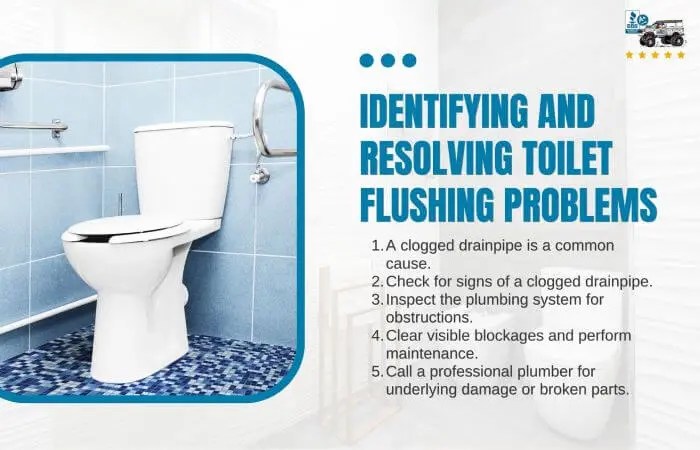
Source: hansensplumbing.com
Troubleshooting plumbing issues, particularly those involving toilets and bathtubs, requires a systematic approach. A methodical evaluation of potential causes, followed by targeted checks and repairs, significantly increases the likelihood of a swift and effective resolution. This section provides a comprehensive guide to troubleshooting common toilet and bathtub problems.
Prioritizing Potential Causes
Identifying the root cause is crucial for effective troubleshooting. Consider factors like water pressure, supply lines, and structural elements. A toilet that won’t flush might be due to a simple clog or a more complex issue within the plumbing system. Similarly, a bathtub that overflows could stem from a clogged drain or a leak in the plumbing. Start with the most likely causes and work towards less probable ones, saving the most complex solutions for last.
Assessing Water Pressure and Supply
Adequate water pressure is essential for proper toilet flushing and bathtub operation. Low water pressure may prevent a toilet from flushing completely or cause a bathtub to fill slowly. Check the water pressure by running a tap. If the pressure is weak, investigate the main water supply valve and ensure it is fully open. If the pressure remains low, consult a plumber to diagnose and resolve any issues with the main water supply line.
Inspecting Plumbing Connections
Inspecting plumbing connections for leaks or blockages is a vital step in troubleshooting. A leak in a supply line or a blockage in a pipe can lead to various problems, including overflowing bathtubs or toilets that won’t flush. Visual inspection of connections, especially those near the toilet or bathtub, can reveal leaks or loose fittings. Use a flashlight to check for any signs of water damage around the connections. If a leak is found, address it promptly.
Examining Drain Clogs
Clogged drains are a frequent cause of both toilet and bathtub issues. A clogged drain can prevent water from flowing properly, leading to a toilet that won’t flush or a bathtub that overflows. Start by examining the visible drain openings for any obstructions. Use a plunger to attempt to clear clogs in the toilet bowl or bathtub drain. If the plunger doesn’t work, consider using a drain snake to remove blockages further down the drain line.
Evaluating Structural Issues
Structural issues can sometimes contribute to toilet and bathtub problems. A cracked or damaged drainpipe can cause water to leak or accumulate, leading to an overflow. Inspect the area around the toilet or bathtub for any signs of structural damage, such as cracks in the floor or wall. If structural issues are suspected, consult a professional to assess the situation and make appropriate repairs.
Troubleshooting Flowchart
| Problem | Step 1 | Step 2 | Step 3 |
|---|---|---|---|
| Toilet Won’t Flush | Check water pressure | Inspect plumbing connections | Examine drain clogs (plunger, drain snake) |
| Bathtub Overflowing | Check water pressure | Inspect plumbing connections | Examine drain clogs (plunger, drain snake) |
This flowchart provides a visual guide for troubleshooting, prioritizing water pressure, plumbing connections, and drain clogs. The steps are presented in a logical order for effective problem-solving.
Conclusion: Toilet Won T Flush And Bathtub Fills
In conclusion, addressing a toilet that won’t flush and a bathtub that fills often involves a systematic approach to diagnosing the root cause. This guide has explored the numerous potential issues, ranging from simple clogs to more complex structural problems. By following the provided troubleshooting steps and understanding the interconnected nature of plumbing systems, you’ll be well-equipped to tackle these common household plumbing problems.

